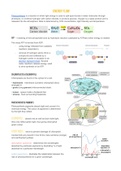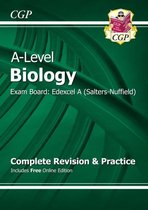Summary
Summary Biology As level Unit 4 Topic 7
- Institution
- PEARSON (PEARSON)
International Biology As level Unit 4 Topic 7 (energy flow, ecosystems and environment). This is a summary of the notes of the topic 7, with the information in these notes you will get a A+.
[Show more]




